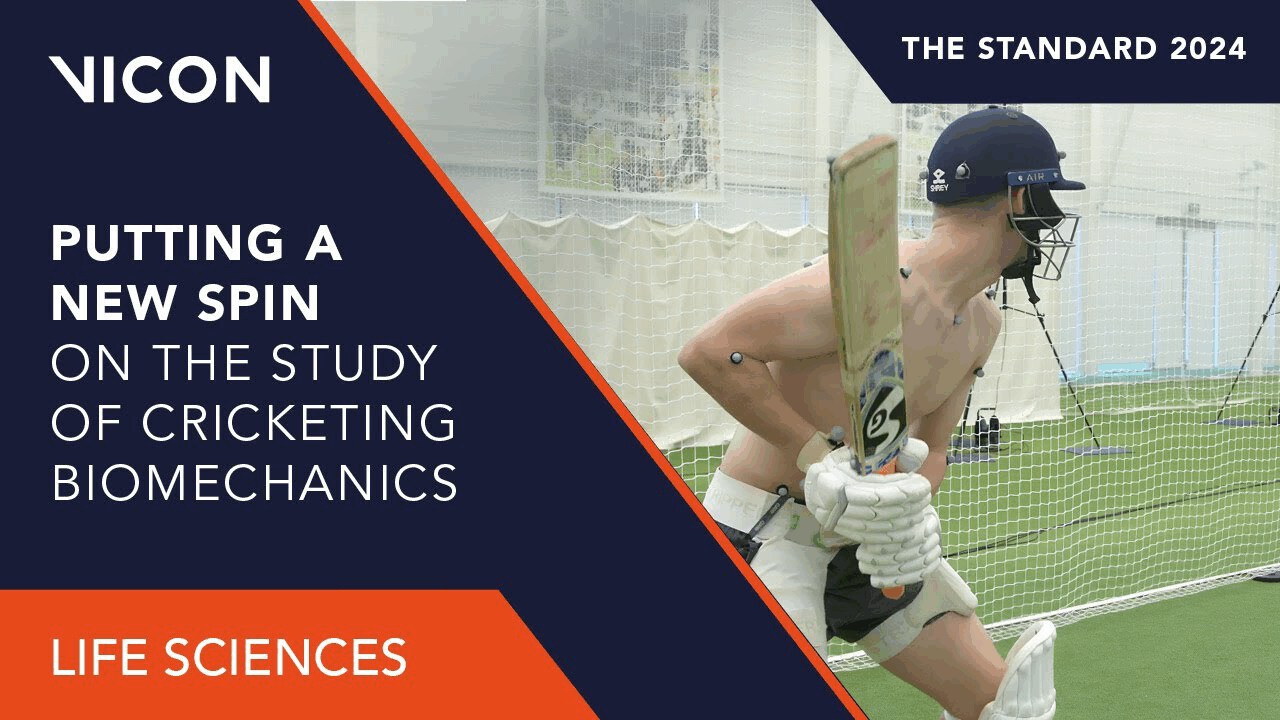Putting a new spin on the study of cricketing biomechanics
Historically, much of the motion analysis done on cricketing performance has focused on male players, but researchers at Loughborough University are broadening the field of study.
Loughborough University’s School of Sport, Exercise and Health Sciences has been using motion capture to study sporting performance since the 1990s. In 2016, it opened the National Centre for Sport and Exercise Medicine, complete with three Vicon-equipped motion analysis labs and an array of other cutting-edge technology, to deliver education, research and clinical services in sports.
In collaboration with the England and Wales Cricket Board (ECB), Professor Mark King has put over a decade and a half of research into the biomechanics of cricket to enhance performance and reduce injuries in players. Previously being focused on male batters, the batting-specific work with ECB recently shifted to studying female players, with the England women under 19 cricket squad, ahead of their 2023 World Cup.
“Over the last five years or so, we’ve done a series of studies on power hitting and batting,” says Dr Stuart McErlain-Naylor, Sport & Exercise Biomechanics Lecturer, Loughborough University. “However, all of that research was specifically on male batters. It will be really useful for us to know whether that research applies equally to the female squads, or whether we need to be coaching women differently to the recommendations that we’ve developed for male participants.”
Take a look at the video below to see how it was done.

How can you use motion capture for your projects?
Build, customise and visualise your own motion capture system using the Vicon Visualisation Tool.
Build your systemSame sport, different game
“Some of the challenges women face are quite different to the men, which is why it’s important to collect this research on the female participants,” says Dr Peter Alway, Research & Operations Manager, ECB. “They have a different physiological makeup to the men, such as their anthropometrics being smaller. Typically, they have different strength profiles to the men, and they also face a much greater proportion of spin bowling compared to the men’s game, so it’s important that we understand how they bat against this mode of bowling.
“We’re looking at batters facing both fast bowling and spin bowling and how the techniques may differ between the two modes, but we’re also looking at the technical characteristics that are associated with the carry distance.”
To get the necessary data, the team is using a relatively large setup. “We’re using 17 Vicon cameras in conjunction with Nexus, and that allows us excellent precision with understanding joint angles and just how the players move in relation to their performance,” says Dr Alway.
Researching the under 19 age group is part of a wider push to cover the broadest range of female cricketers as possible.
“We’re assessing their power hitting technique so that we can provide feedback to them. We can compare it to data from the senior women’s squad, who we tested previously. It can also feed into our ongoing research program, identifying factors that are associated with success in power hitting within cricket,” says Dr McErlain-Naylor.
“It’s really important that we specifically research female participants ranging from junior all the way up to the elite senior players in order to provide tailored recommendations,” he goes on. “The ideal outcome from this research in the short term is to help them to assess their power hitting technique and provide some feedback, as well as any recommendations around how they differ to the elite senior squad, who we tested previously.
“In the medium to long term, the results will hopefully also feed into our research so that we can provide recommendations around the associations between technique factors and bat speed, ball speed, and carry distance. Those relationships ultimately determine success within a power hitting task across different ability levels and different age groups within women’s cricket.”
For more on the work Loughborough University and the ECB are doing with women’s cricketers, see our video case study.